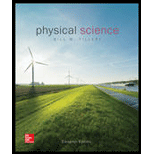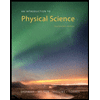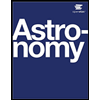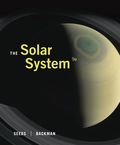
Physical Science
11th Edition
ISBN: 9780077862626
Author: Bill Tillery, Stephanie J. Slater, Timothy F. Slater
Publisher: McGraw-Hill Education
expand_more
expand_more
format_list_bulleted
Textbook Question
Chapter 23, Problem 11QFT
How is climate different from the weather?
Expert Solution & Answer
Want to see the full answer?
Check out a sample textbook solution
Students have asked these similar questions
How would humidity change if temperatures go up or down?
Why do climates near the coasts tend to be more moderate than in the middle of continent?
How does temperature affect air currents?
Chapter 23 Solutions
Physical Science
Ch. 23 -
1. Condensation of water vapor into clouds or fog...Ch. 23 - Prob. 2ACCh. 23 - 3. Which is not an example of precipitation?
a....Ch. 23 - Prob. 4ACCh. 23 - Prob. 5ACCh. 23 - Prob. 6ACCh. 23 - Prob. 7ACCh. 23 - Prob. 8ACCh. 23 - Prob. 9ACCh. 23 - Prob. 10AC
Ch. 23 - Prob. 11ACCh. 23 - Prob. 12ACCh. 23 -
13. The separation of charge associated with the...Ch. 23 -
14. An intense low-pressure area with widespread...Ch. 23 -
15. A hurricane does not have
a. gale...Ch. 23 - Prob. 16ACCh. 23 - Prob. 17ACCh. 23 -
18. The source of energy that drives the...Ch. 23 - Prob. 19ACCh. 23 -
20. A thunderstorm that occurs at 3 a.m. over a...Ch. 23 - Prob. 21ACCh. 23 - Prob. 22ACCh. 23 - Prob. 23ACCh. 23 - Prob. 24ACCh. 23 - Prob. 25ACCh. 23 - Prob. 26ACCh. 23 - Prob. 27ACCh. 23 - 28. A cloud is hundreds of tiny water droplets...Ch. 23 - Prob. 29ACCh. 23 - 30. In order for liquid cloud droplets at the...Ch. 23 - Prob. 31ACCh. 23 - 32. Which basic form of a cloud usually produces...Ch. 23 - Prob. 33ACCh. 23 - Prob. 34ACCh. 23 - Prob. 35ACCh. 23 - The basic difference between a tropical storm and...Ch. 23 - 37. Most of the great deserts of the world are...Ch. 23 - 38. The average temperature of a location is made...Ch. 23 - Prob. 39ACCh. 23 - Prob. 40ACCh. 23 - Prob. 41ACCh. 23 - Prob. 42ACCh. 23 - Prob. 43ACCh. 23 - 44. Precipitation that is formed by cycling...Ch. 23 - 45. The smallest, most violent weather event is a...Ch. 23 -
1. What is a cloud? Describe how a cloud forms.
Ch. 23 - 2. What is atmospheric stability? What does this...Ch. 23 - Prob. 3QFTCh. 23 - Prob. 4QFTCh. 23 - 5. What kinds of clouds and weather changes are...Ch. 23 - 6. Describe the wind direction, pressure, and...Ch. 23 - Prob. 7QFTCh. 23 - 8. Describe the three main stages in the life of a...Ch. 23 - 9. What is a tornado? When and where do tornadoes...Ch. 23 -
10. What is a hurricane? Describe how the weather...Ch. 23 -
11. How is climate different from the weather?
Ch. 23 - Prob. 12QFTCh. 23 -
13. Identify the four major factors that...Ch. 23 -
14. Since heated air rises, why is snow found on...Ch. 23 -
1. Explain why dew is not considered to be a form...Ch. 23 - 2. What are the significant similarities and...Ch. 23 - Prob. 3FFACh. 23 - 4. Describe several examples of regional climate...Ch. 23 -
1. At a certain location, the surface temperature...Ch. 23 - 2. The surface temperature is 21°C, and the lapse...Ch. 23 - 3. A parcel of air with a volume of 5.2 103 km3...Ch. 23 - 4. A parcel of air with a volume of 9.1 104 km3...Ch. 23 - A parcel of air with a volume of 7.3 104 km3...Ch. 23 - Prob. 6PEBCh. 23 - 7. Atmospheric soundings from four weather...Ch. 23 - Prob. 8PEBCh. 23 - Prob. 9PEBCh. 23 - Prob. 10PEBCh. 23 - Prob. 11PEBCh. 23 -
12. The following table lists average monthly...Ch. 23 - Prob. 13PEB
Additional Science Textbook Solutions
Find more solutions based on key concepts
Whether two metal foil leaves an electroscope get opposite charge when the electroscope is charged.
Physics of Everyday Phenomena
The validity of a scientific law.
The Physical Universe
5.106 A 70-kg person rides in a 30-kg cart moving at 12 m/s at the top of a hill that is in the shape of an arc...
University Physics (14th Edition)
How would Figure 10.13 change if the temperature of the gas were increased? FIGURE 10.13 The Maxwell velocity d...
MODERN PHYSICS (LOOSELEAF)
A container ship is 240m long and 22m wide. Assume that the shape is like a rectangular box. How much mass does...
Fundamentals Of Thermodynamics
Knowledge Booster
Learn more about
Need a deep-dive on the concept behind this application? Look no further. Learn more about this topic, physics and related others by exploring similar questions and additional content below.Similar questions
- What is a convection cycle, and what are the related effects near a large body of water such as the ocean?arrow_forwardWhich way, relative to the wind direction, does a wind vane (or weather vane) point and why?arrow_forwardWhat regulates the Earths average temperature? (19.2) (a) Rayleigh scattering (b) the greenhouse effect (c) atmospheric pressure (d) photosynthesisarrow_forward
- When is the relative humidity 100%? It may be raining, but a sheltered psychrometer doesnt read 100%. Why?arrow_forwardOn a day when the air temperature is 85F, the wet-bulb reading of a psychrometer is 70F. Find each of the following: (a) relative humidity, (b) dew point, (c) maximum moisture capacity of the air, and (d) actual moisture content of the air.arrow_forwardWhat is the most violent of storms? Is it the most energetic?arrow_forward
arrow_back_ios
arrow_forward_ios
Recommended textbooks for you
 An Introduction to Physical SciencePhysicsISBN:9781305079137Author:James Shipman, Jerry D. Wilson, Charles A. Higgins, Omar TorresPublisher:Cengage Learning
An Introduction to Physical SciencePhysicsISBN:9781305079137Author:James Shipman, Jerry D. Wilson, Charles A. Higgins, Omar TorresPublisher:Cengage Learning AstronomyPhysicsISBN:9781938168284Author:Andrew Fraknoi; David Morrison; Sidney C. WolffPublisher:OpenStax
AstronomyPhysicsISBN:9781938168284Author:Andrew Fraknoi; David Morrison; Sidney C. WolffPublisher:OpenStax

An Introduction to Physical Science
Physics
ISBN:9781305079137
Author:James Shipman, Jerry D. Wilson, Charles A. Higgins, Omar Torres
Publisher:Cengage Learning

Astronomy
Physics
ISBN:9781938168284
Author:Andrew Fraknoi; David Morrison; Sidney C. Wolff
Publisher:OpenStax

The Laws of Thermodynamics, Entropy, and Gibbs Free Energy; Author: Professor Dave Explains;https://www.youtube.com/watch?v=8N1BxHgsoOw;License: Standard YouTube License, CC-BY